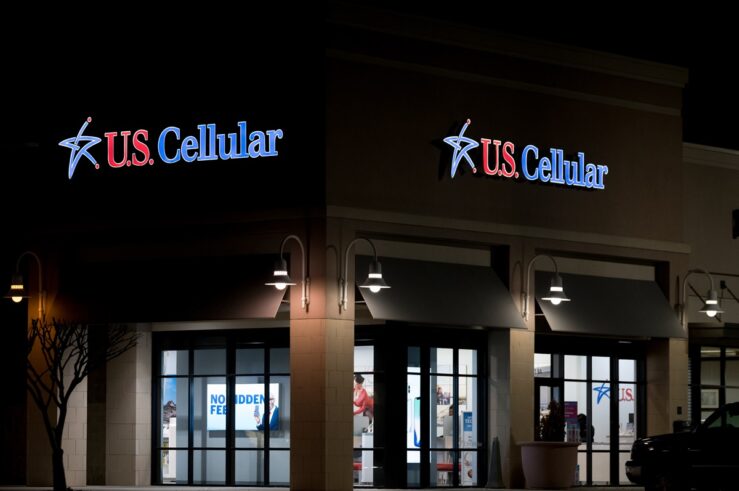Last week, the DOJ cleared the merger of CVS Health and Aetna (conditional on Aetna’s divesting its Medicare Part D business), a merger that, as I previously noted at a House Judiciary hearing, “presents a creative effort by two of the most well-informed and successful industry participants to try something new to reform a troubled system.” (My full testimony is available here).
Of course it’s always possible that the experiment will fail — that the merger won’t “revolutioniz[e] the consumer health care experience” in the way that CVS and Aetna are hoping. But it’s a low (antitrust) risk effort to address some of the challenges confronting the healthcare industry — and apparently the DOJ agrees.
I discuss the weakness of the antitrust arguments against the merger at length in my testimony. What I particularly want to draw attention to here is how this merger — like many vertical mergers — represents business model innovation by incumbents.
The CVS/Aetna merger is just one part of a growing private-sector movement in the healthcare industry to adopt new (mostly) vertical arrangements that seek to move beyond some of the structural inefficiencies that have plagued healthcare in the United States since World War II. Indeed, ambitious and interesting as it is, the merger arises amidst a veritable wave of innovative, vertical healthcare mergers and other efforts to integrate the healthcare services supply chain in novel ways.
These sorts of efforts (and the current DOJ’s apparent support for them) should be applauded and encouraged. I need not rehash the economic literature on vertical restraints here (see, e.g., Lafontaine & Slade, etc.). But especially where government interventions have already impaired the efficient workings of a market (as they surely have, in spades, in healthcare), it is important not to compound the error by trying to micromanage private efforts to restructure around those constraints.
Current trends in private-sector-driven healthcare reform
In the past, the most significant healthcare industry mergers have largely been horizontal (i.e., between two insurance providers, or two hospitals) or “traditional” business model mergers for the industry (i.e., vertical mergers aimed at building out managed care organizations). This pattern suggests a sort of fealty to the status quo, with insurers interested primarily in expanding their insurance business or providers interested in expanding their capacity to provide medical services.
Today’s health industry mergers and ventures seem more frequently to be different in character, and they portend an industry-wide experiment in the provision of vertically integrated healthcare that we should enthusiastically welcome.
Drug pricing and distribution innovations
To begin with, the CVS/Aetna deal, along with the also recently approved Cigna-Express Scripts deal, solidifies the vertical integration of pharmacy benefit managers (PBMs) with insurers.
But a number of other recent arrangements and business models center around relationships among drug manufacturers, pharmacies, and PBMs, and these tend to minimize the role of insurers. While not a “vertical” arrangement, per se, Walmart’s generic drug program, for example, offers $4 prescriptions to customers regardless of insurance (the typical generic drug copay for patients covered by employer-provided health insurance is $11), and Walmart does not seek or receive reimbursement from health plans for these drugs. It’s been offering this program since 2006, but in 2016 it entered into a joint buying arrangement with McKesson, a pharmaceutical wholesaler (itself vertically integrated with Rexall pharmacies), to negotiate lower prices. The idea, presumably, is that Walmart will entice consumers to its stores with the lure of low-priced generic prescriptions in the hope that they will buy other items while they’re there. That prospect presumably makes it worthwhile to route around insurers and PBMs, and their reimbursements.
Meanwhile, both Express Scripts and CVS Health (two of the country’s largest PBMs) have made moves toward direct-to-consumer sales themselves, establishing pricing for a small number of drugs independently of health plans and often in partnership with drug makers directly.
Also apparently focused on disrupting traditional drug distribution arrangements, Amazon has recently purchased online pharmacy PillPack (out from under Walmart, as it happens), and with it received pharmacy licenses in 49 states. The move introduces a significant new integrated distributor/retailer, and puts competitive pressure on other retailers and distributors and potentially insurers and PBMs, as well.
Whatever its role in driving the CVS/Aetna merger (and I believe it is smaller than many reports like to suggest), Amazon’s moves in this area demonstrate the fluid nature of the market, and the opportunities for a wide range of firms to create efficiencies in the market and to lower prices.
At the same time, the differences between Amazon and CVS/Aetna highlight the scope of product and service differentiation that should contribute to the ongoing competitiveness of these markets following mergers like this one.
While Amazon inarguably excels at logistics and the routinizing of “back office” functions, it seems unlikely for the foreseeable future to be able to offer (or to be interested in offering) a patient interface that can rival the service offerings of a brick-and-mortar CVS pharmacy combined with an outpatient clinic and its staff and bolstered by the capabilities of an insurer like Aetna. To be sure, online sales and fulfillment may put price pressure on important, largely mechanical functions, but, like much technology, it is first and foremost a complement to services offered by humans, rather than a substitute. (In this regard it is worth noting that McKesson has long been offering Amazon-like logistics support for both online and brick-and-mortar pharmacies. “‘To some extent, we were Amazon before it was cool to be Amazon,’ McKesson CEO John Hammergren said” on a recent earnings call).
Treatment innovations
Other efforts focus on integrating insurance and treatment functions or on bringing together other, disparate pieces of the healthcare industry in interesting ways — all seemingly aimed at finding innovative, private solutions to solve some of the costly complexities that plague the healthcare market.
Walmart, for example, announced a deal with Quest Diagnostics last year to experiment with offering diagnostic testing services and potentially other basic healthcare services inside of some Walmart stores. While such an arrangement may simply be a means of making doctor-prescribed diagnostic tests more convenient, it may also suggest an effort to expand the availability of direct-to-consumer (patient-initiated) testing (currently offered by Quest in Missouri and Colorado) in states that allow it. A partnership with Walmart to market and oversee such services has the potential to dramatically expand their use.
Capping off (for now) a buying frenzy in recent years that included the purchase of PBM, CatamaranRx, UnitedHealth is seeking approval from the FTC for the proposed merger of its Optum unit with the DaVita Medical Group — a move that would significantly expand UnitedHealth’s ability to offer medical services (including urgent care, outpatient surgeries, and health clinic services), give it a significant group of doctors’ clinics throughout the U.S., and turn UnitedHealth into the largest employer of doctors in the country. But of course this isn’t a traditional managed care merger — it represents a significant bet on the decentralized, ambulatory care model that has been slowly replacing significant parts of the traditional, hospital-centric care model for some time now.
And, perhaps most interestingly, some recent moves are bringing together drug manufacturers and diagnostic and care providers in innovative ways. Swiss pharmaceutical company, Roche, announced recently that “it would buy the rest of U.S. cancer data company Flatiron Health for $1.9 billion to speed development of cancer medicines and support its efforts to price them based on how well they work.” Not only is the deal intended to improve Roche’s drug development process by integrating patient data, it is also aimed at accommodating efforts to shift the pricing of drugs, like the pricing of medical services generally, toward an outcome-based model.
Similarly interesting, and in a related vein, early this year a group of hospital systems including Intermountain Health, Ascension, and Trinity Health announced plans to begin manufacturing generic prescription drugs. This development further reflects the perceived benefits of vertical integration in healthcare markets, and the move toward creative solutions to the unique complexity of coordinating the many interrelated layers of healthcare provision. In this case,
[t]he nascent venture proposes a private solution to ensure contestability in the generic drug market and consequently overcome the failures of contracting [in the supply and distribution of generics]…. The nascent venture, however it solves these challenges and resolves other choices, will have important implications for the prices and availability of generic drugs in the US.
More enforcement decisions like CVS/Aetna and Bayer/Monsanto; fewer like AT&T/Time Warner
In the face of all this disruption, it’s difficult to credit anticompetitive fears like those expressed by the AMA in opposing the CVS-Aetna merger and a recent CEA report on pharmaceutical pricing, both of which are premised on the assumption that drug distribution is unavoidably dominated by a few PBMs in a well-defined, highly concentrated market. Creative arrangements like the CVS-Aetna merger and the initiatives described above (among a host of others) indicate an ease of entry, the fluidity of traditional markets, and a degree of business model innovation that suggest a great deal more competitiveness than static PBM market numbers would suggest.
This kind of incumbent innovation through vertical restructuring is an increasingly important theme in antitrust, and efforts to tar such transactions with purported evidence of static market dominance is simply misguided.
While the current DOJ’s misguided (and, remarkably, continuing) attempt to stop the AT&T/Time Warner merger is an aberrant step in the wrong direction, the leadership at the Antitrust Division generally seems to get it. Indeed, in spite of strident calls for stepped-up enforcement in the always-controversial ag-biotech industry, the DOJ recently approved three vertical ag-biotech mergers in fairly rapid succession.
As I noted in a discussion of those ag-biotech mergers, but equally applicable here, regulatory humility should continue to carry the day when it comes to structural innovation by incumbent firms:
But it is also important to remember that innovation comes from within incumbent firms, as well, and, often, that the overall level of innovation in an industry may be increased by the presence of large firms with economies of scope and scale.
In sum, and to paraphrase Olympia Dukakis’ character in Moonstruck: “what [we] don’t know about [the relationship between innovation and market structure] is a lot.”
What we do know, however, is that superficial, concentration-based approaches to antitrust analysis will likely overweight presumed foreclosure effects and underweight innovation effects.
We shouldn’t fetishize entry, or access, or head-to-head competition over innovation, especially where consumer welfare may be significantly improved by a reduction in the former in order to get more of the latter.




